- Blog
- Vital Proteins Marketing Strategy: How the Collagen Brand Became a $13M DTC Wellness Powerhouse
Vital Proteins Marketing Strategy: How the Collagen Brand Became a $13M DTC Wellness Powerhouse
-
Anna Varga
- Marketing Breakdowns
- 6 min read
Table of Contents
Collagen was once confined to bodybuilders and niche wellness forums. Today, it’s a staple in morning routines—from coffee drinkers to skincare enthusiasts—and has a rising presence across social platforms like TikTok.
At the center of this transformation is Vital Proteins, the brand that took collagen from niche to mainstream and racked up $13 million in DTC revenue in 2024 doing it.
This wasn’t about flashy ads or celebrity hype (though Jennifer Aniston did sign on later). It was about tight execution, smart data use, and building real consumer trust, not buying it.
Here’s how they did it.
1. Consider your positioning
Vital Proteins shifted from fitness supplement to wellness lifestyle brand, making collagen part of daily routines, not just gym sessions.
Key moves:
- Tagline: “For Everybody With a Body” — broad, inclusive messaging
- Benefits: Focused on beauty, mobility, and healthy aging (hair, skin, joints)
- Visuals: Clean, modern packaging that fits wellness shelves and social feeds
- Lifestyle fit: Positioned collagen as a habit, not a supplement

This positioning helped the brand escape the niche fitness corner and attract a much wider audience, especially millennials and Gen Z.
It also made space for expansion into convenient formats like RTD drinks, collagen creamers, and bars, fitting seamlessly into real daily habits.
2. Take influencer marketing step by step
Vital Proteins built credibility from the ground up, starting with micro-influencers who had small but highly engaged followings.
@torihalford #VitalPartner a verrrry typical morning around here, plus nothing beats a morning chocolate shake @Vital Proteins Shop ♬ original sound - tori halford
These creators, often in the 2,000 to 5,000 follower range, were nutritionists, wellness coaches, and beauty enthusiasts—people whose audiences trusted them deeply.
@iamsofiajavier love adding @Vital Proteins to my daily work routine! ✨🍓 #vitalproteins #vitalpartner ♬ original sound - Sofia Javier
One standout example is Sofia Javier, a wellness content creator with under 200k followers but a 9%+ engagement rate, well above industry norms.
Influencers like her helped normalize collagen use through everyday routines: mixing it into morning coffee, smoothies, or post-workout drinks.
Rather than one-off deals, Vital Proteins built long-term relationships, supported by influencer managers and an affiliate program that allowed creators to monetize without compromising authenticity.
As the brand matured, so did its influencer strategy. Enter Jennifer Aniston—not just as a face of the brand, but as Chief Creative Officer and long-term collaborator.
Her involvement validated the brand’s wellness-first identity to a wider, more mainstream audience. This evolution helped Vital Proteins scale without losing its authenticity.
3. Build the brand before you scale it
Vital Proteins focused on DTC first. This gave them full control over pricing, messaging, customer experience, and data, critical for testing what works.
In 2024, their DTC channel generated $13M in revenue, with a 2.5–3% conversion rate and a high AOV. Once they had traction, they expanded into retail and Amazon on their own terms.
On Amazon, they carried over their DTC learnings: optimized listings, keyword targeting, A+ content, and review strategy. Instead of competing on price, they competed on brand value and visibility.

4. Turn everyday habits into brand touchpoints
Vital Proteins doesn’t rely on product drops or short campaigns. Instead, they use an always-on content strategy across Pinterest, Instagram, and TikTok, platforms that reflect how their audience discovers, saves, and shares wellness routines.
For example, on Pinterest, Vital Proteins ran campaigns using Idea Ads and quiz-style formats that aligned with user intent (“morning routine ideas,” “skincare habits”).
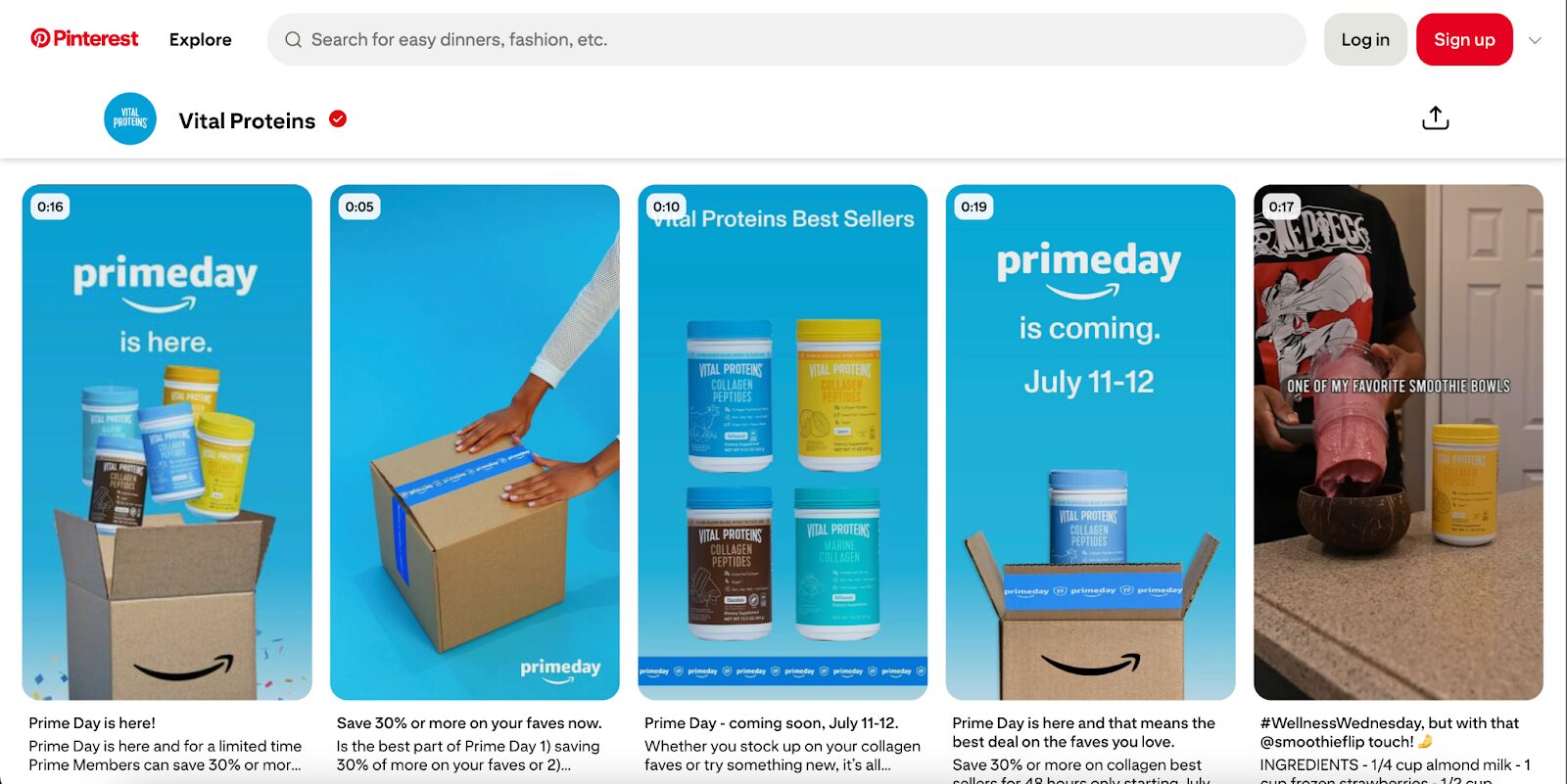
This led to a 60% increase in user actions and a 5% lift in brand awareness, according to Pinterest’s own performance data.
Their content strategy is built around behavior:
- Collagen in coffee tutorials
- Wellness tips by goal (skin, joint, recovery)
- Explainer videos comparing formats (powder vs. gummies)
- Unboxing and ASMR content to highlight ease-of-use
Importantly, they track performance across all touchpoints, using brand lift studies, engagement metrics, and influencer data to adapt creative and messaging in real time.
5. Build a site that sells without pushing
When you land on the homepage, you’re greeted with a multi-step popup that does more than ask for an email.
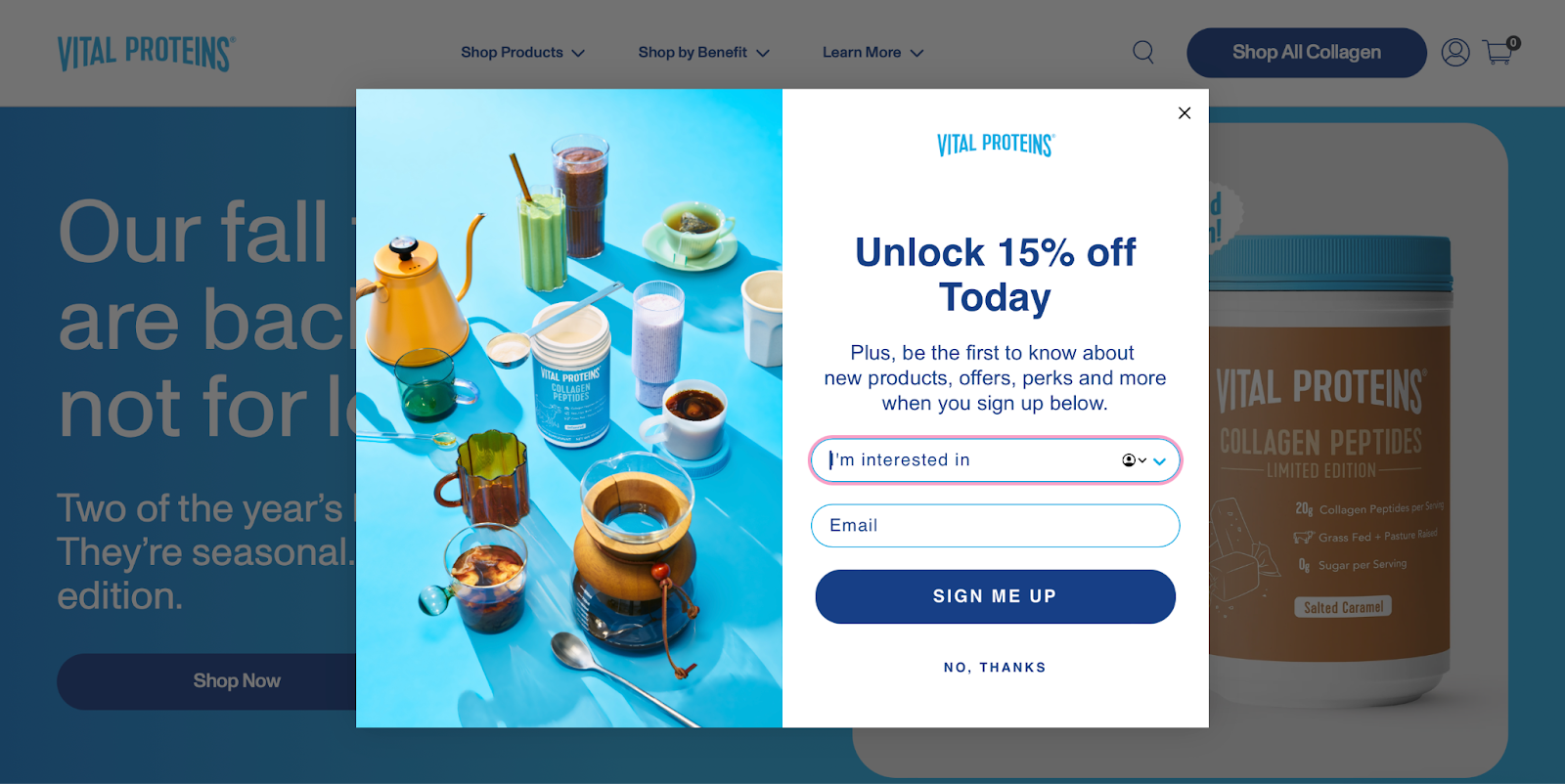
First, it prompts you to select your primary wellness interest—skin, joints, hair, or fitness.

Then it offers 15% off in exchange for your email, followed by a request for your phone number to opt into SMS.
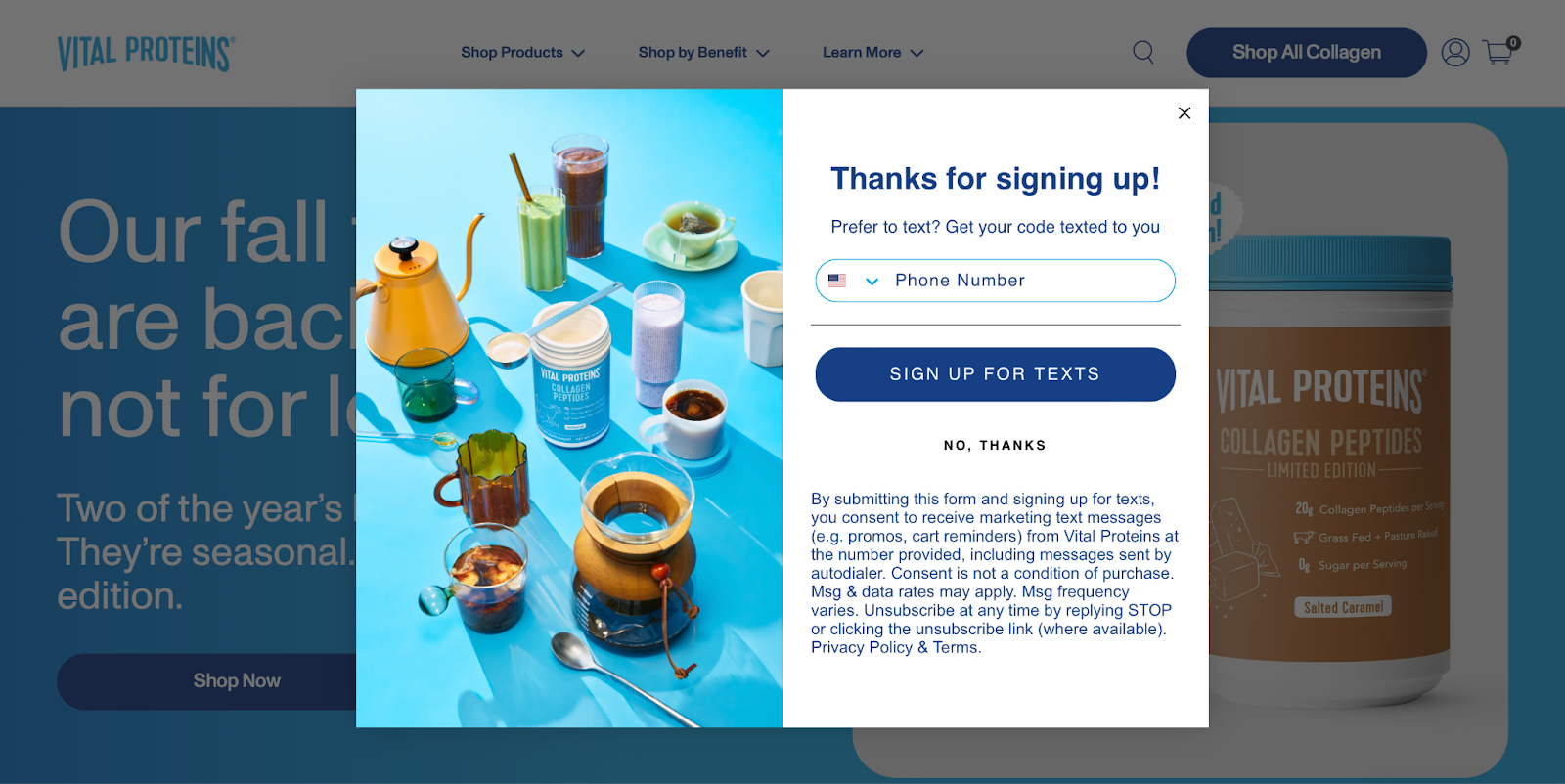
It’s a layered, value-driven approach that collects zero-party data without friction.
On the product pages, every section plays a role in building confidence. They clearly highlight what the product does, what’s in it, and why those ingredients matter for your health or beauty goals.
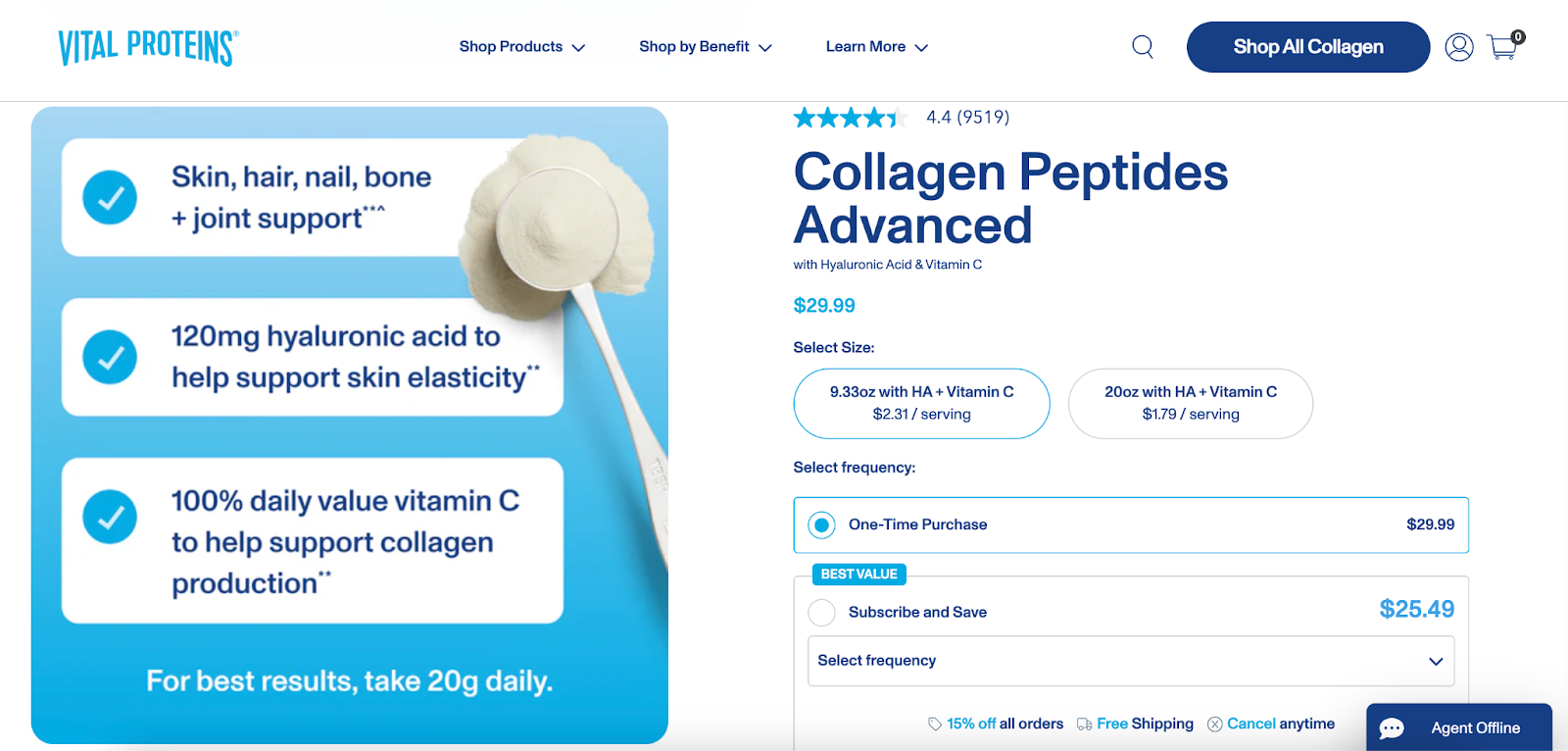
The option to choose between a one-time purchase and a subscription (with flexible delivery from 1 to 8 weeks) is simple and transparent. Pricing updates in real-time to show subscription savings.
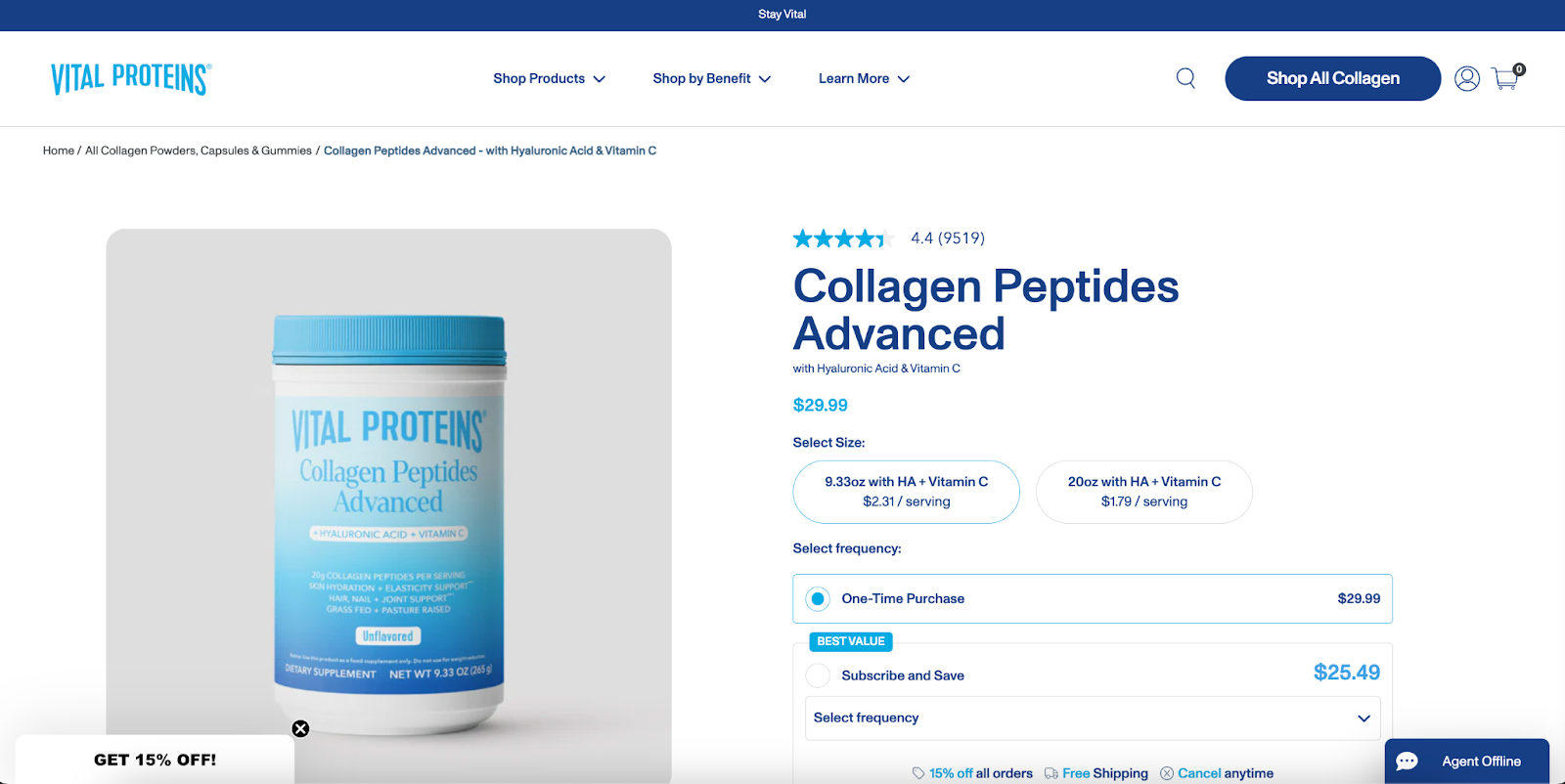
Further down, detailed descriptions, reviews, FAQs, and a “You May Also Like” section support decision-making without pressure.
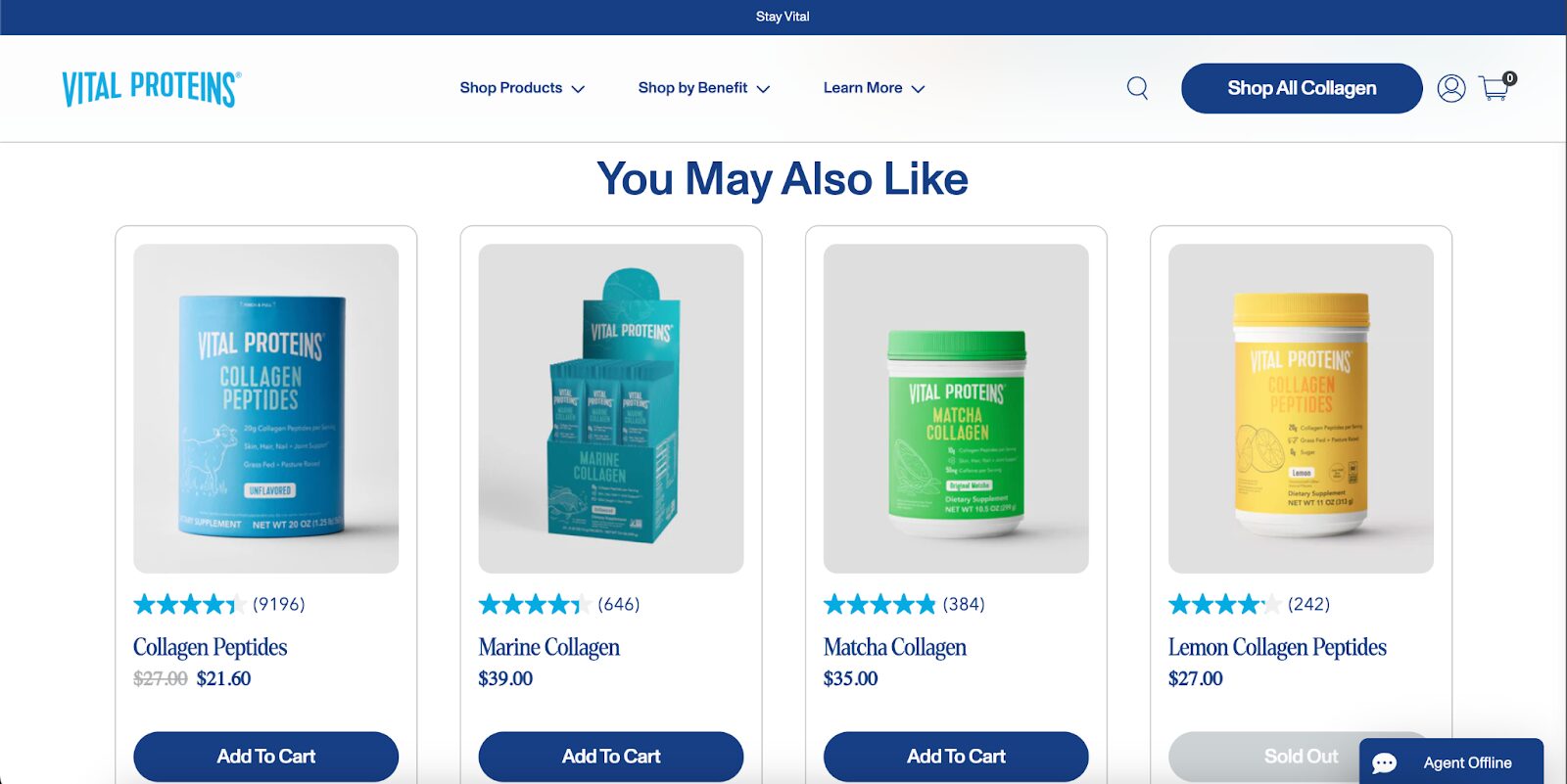
6. Get smarter with how you use your email list
Email is one of Vital Proteins’ highest-performing owned channels, and a key part of how they drive retention, repeat sales, and customer lifetime value.
They keep subject lines short (around 27 characters), use clean, mobile-optimized design, and maintain strong deliverability metrics (average spam score around -2.3).
Emojis are used sparingly—about 10% of the time—to highlight seasonal themes or product drops, not clutter the message.
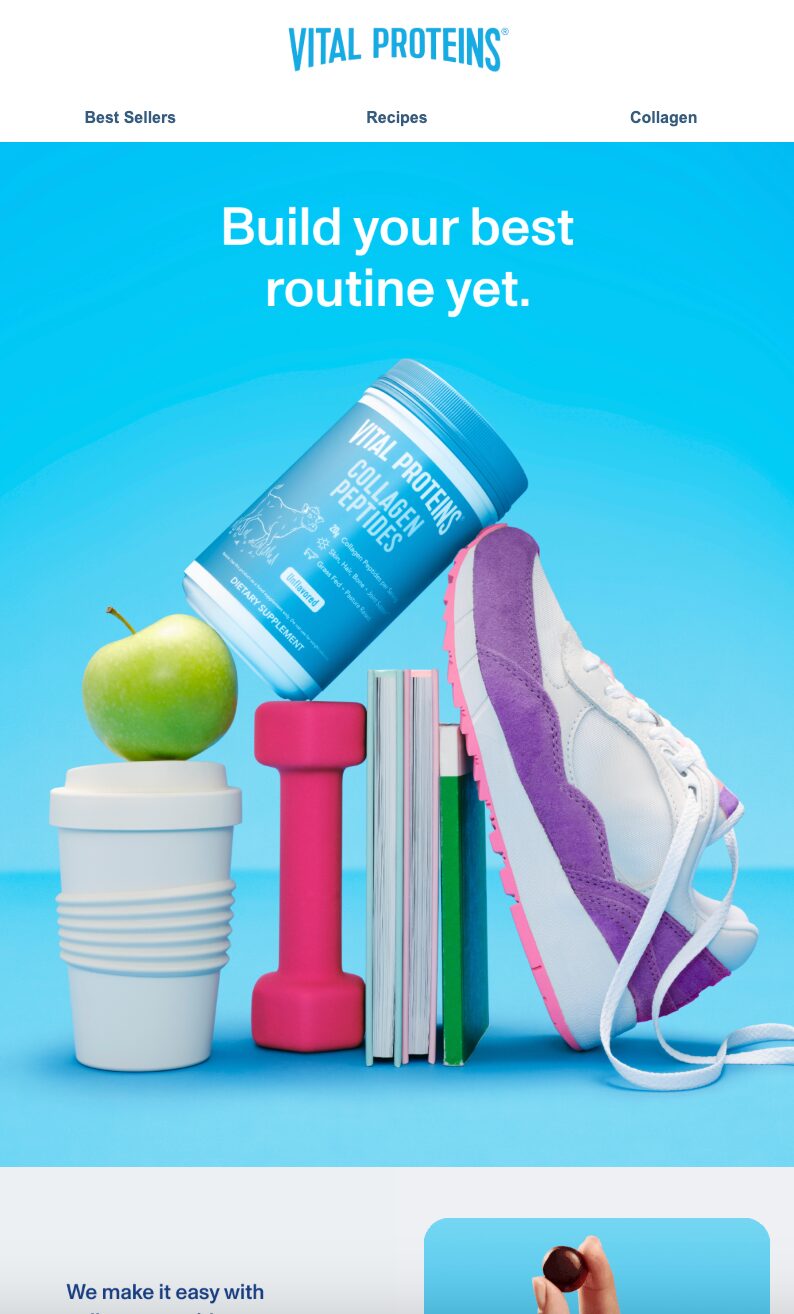
More importantly, the content is tied to behavior and context. Their emails include:
- Wellness tips and guidance on when and how to take collagen
- Recipes featuring products customers have viewed or purchased
- Educational content about ingredient benefits (like hyaluronic acid, vitamin C, or types of collagen)
- Seasonal bundles linked to common health goals (e.g. skin hydration in summer, immune support in winter)

Their acquisition strategy is equally strong. A partnership with Retention.com added over 236,800 new email subscribers in just 90 days, resulting in a 9.25x ROI from follow-up campaigns.
7. Focus on platform-specific execution that converts
Vital Proteins doesn’t just advertise, they adapt. Every platform in their paid media mix plays a specific role, aligned with user intent, creative best practices, and funnel stage.
On Pinterest, they run an always-on strategy that targets the top of the funnel. Using max-width video, Idea Ads, and Quiz Ads, they engage discovery-driven users with wellness content tailored to routines and goals.

Campaigns are optimized through brand lift studies and audience insights, keeping performance both creative and accountable.
On Facebook, video is the dominant format—particularly in the U.S.—with ads focused on storytelling and lifestyle integration.

The “For Everybody With a Body” campaign blended Facebook ads with CTV, podcast sponsorships, and influencer content to create a cohesive omnichannel experience.
And on Google, precision is key. While there are no public case studies on their exact setup, best practices in the health space suggest a focus on compliance (avoiding unproven medical claims), intent-based targeting, and continuous performance optimization.
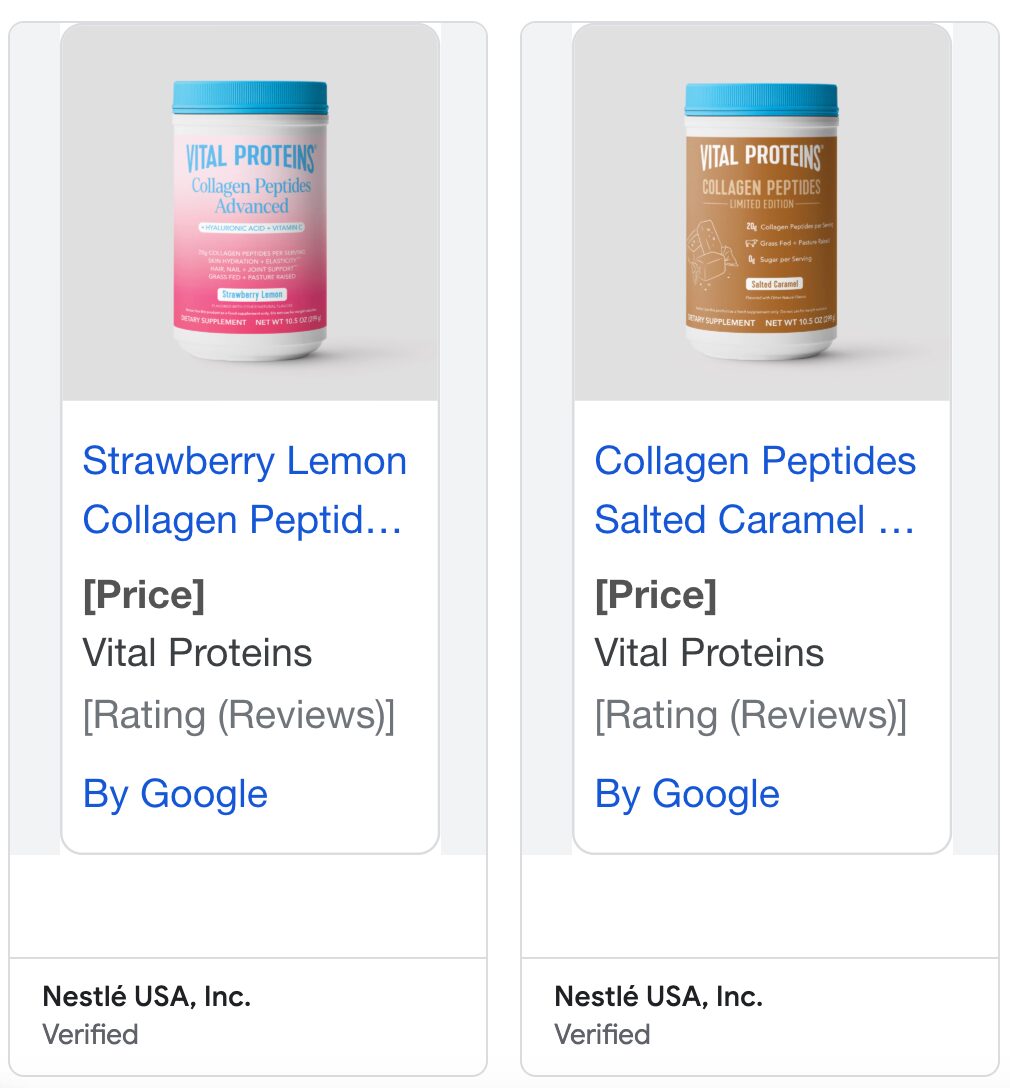
Their likely focus: converting bottom-of-funnel users already searching for collagen or related wellness solutions.
8. Invest in SEO that builds authority
Vital Proteins doesn’t just rely on paid traffic, they’ve built a robust SEO strategy designed for long-term visibility, authority, and user experience.

At the core is a content ecosystem built around topic clusters: beauty, wellness, collagen science, joint support, fitness recovery, and healthy aging. Each cluster links product pages with blog content, FAQs, and educational guides, creating a clear structure for both users and search engines.
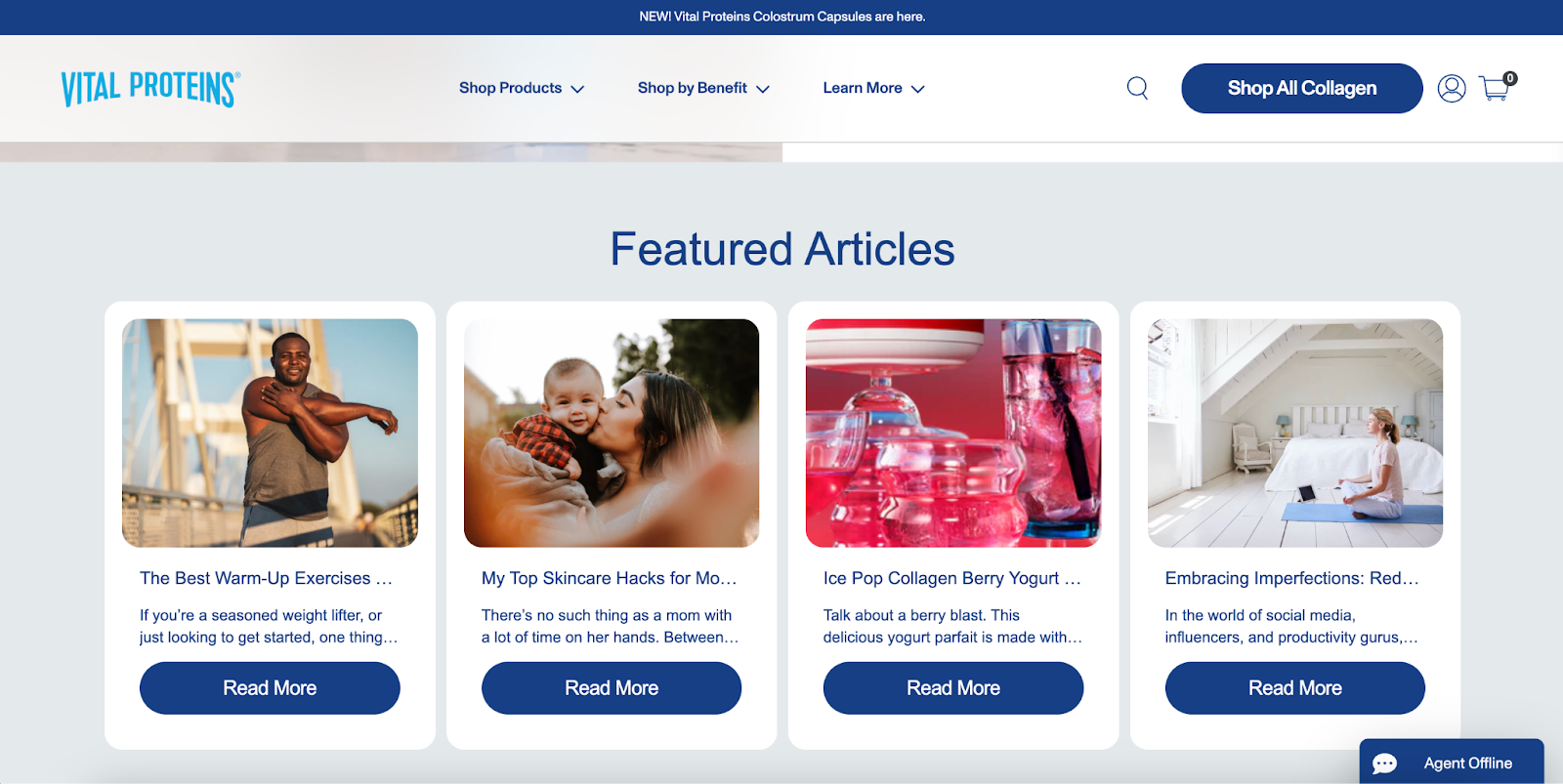
They follow modern SEO best practices, including:
- E-E-A-T principles (Experience, Expertise, Authoritativeness, Trustworthiness), reflected in expert-backed content and transparent product details
- Schema markup for rich snippets, reviews, and FAQs
- Voice search optimization through natural language and conversational headings
- Strong internal linking to keep users exploring longer
The result is a multi-channel organic footprint that supports discovery at every stage, from Google search to Amazon browsing.
Wrapping up
Vital Proteins didn’t win by making noise. They won by doing the fundamentals exceptionally well, turning a single-ingredient supplement into a trusted daily habit.
They built trust through authentic voices, developed loyalty through personalized content, and scaled through smart channel expansion. Every piece of their marketing—from influencer partnerships to SEO to email—is tied back to a clear understanding of their customer and how they live.
Here’s what other brands can take from their playbook:
- Position your product for real life, not just a target demographic
- Focus on retention before scaling acquisition
- Treat influencers as long-term partners, not just paid placements
- Design your website and email flows to support decisions, not just clicks
- Use content to educate, guide, and convert, not just to fill a blog
- Build SEO like a brand asset: long-term, layered, and tied to authority
The result isn’t just growth. It’s a brand that becomes part of people’s routines and stays there.
Learn more
Looking for more marketing breakdowns? Check out these articles:
- Decoding Overtone’s Marketing Strategy: How Innovation and Inclusivity Drive Success
- How Milk Makeup Built a Beauty Powerhouse Through Bold Strategy and Authenticity
- Paula’s Choice Marketing Breakdown: Turning Science into Skincare Success
- Firebelly Tea: A Modern Marketing Strategy for Reimagining the Tea Industry
- GAP’s Marketing Strategy in 2025: Reinventing Heritage for the TikTok Era
Migration has never been easier
We made switching a no-brainer with our free, white-glove onboarding service so you can get started in the blink of an eye.
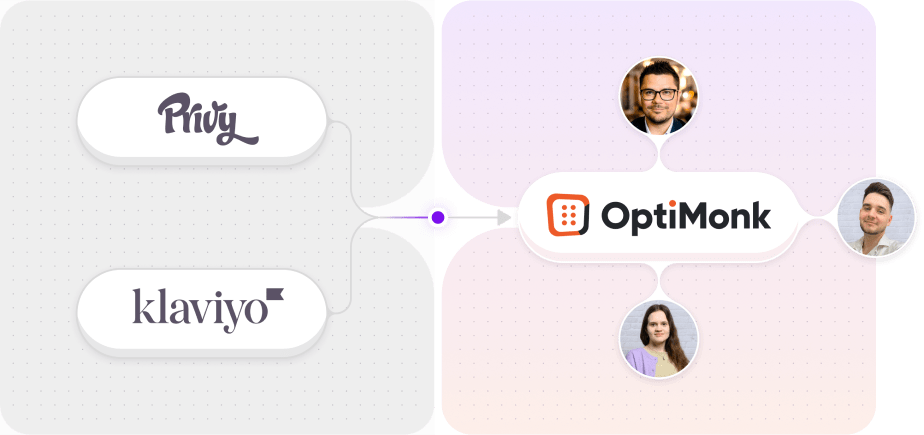
What should you do next?
Thanks for reading till the end. Here are 4 ways we can help you grow your business:
Boost conversions with proven use cases
Explore our Use Case Library, filled with actionable personalization examples and step-by-step guides to unlock your website's full potential. Check out Use Case Library
Create a free OptiMonk account
Create a free OptiMonk account and easily get started with popups and conversion rate optimization. Get OptiMonk free
Get advice from a CRO expert
Schedule a personalized discovery call with one of our experts to explore how OptiMonk can help you grow your business. Book a demo
Join our weekly newsletter
Real CRO insights & marketing tips. No fluff. Straight to your inbox. Subscribe now
- Posted in
- Marketing Breakdowns
Partner with us
- © OptiMonk. All rights reserved!
- Terms of Use
- Privacy Policy
- Cookie Policy
Product updates: January Release 2025








